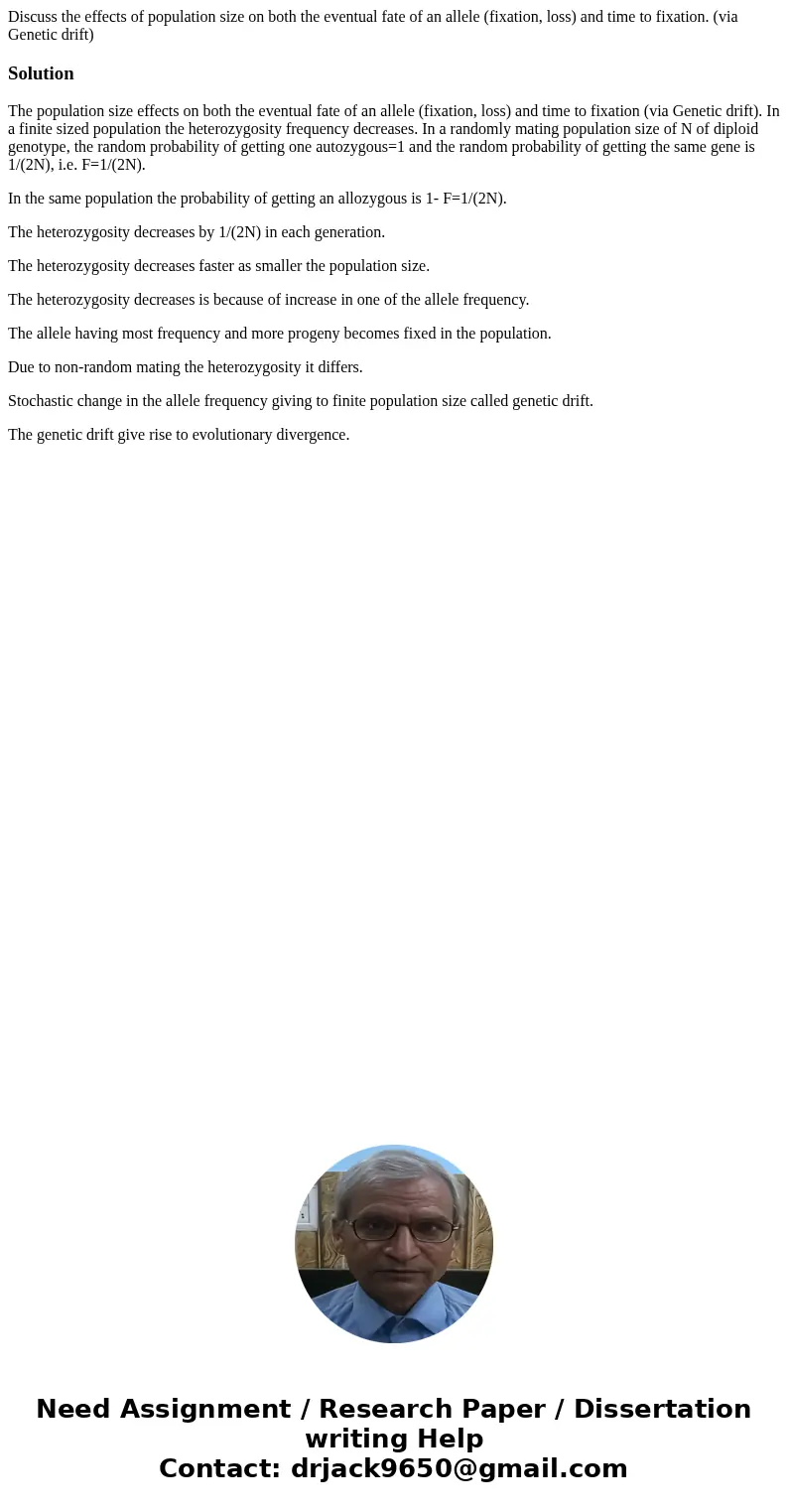Discuss the effects of population size on both the eventual
Discuss the effects of population size on both the eventual fate of an allele (fixation, loss) and time to fixation. (via Genetic drift)
Solution
The population size effects on both the eventual fate of an allele (fixation, loss) and time to fixation (via Genetic drift). In a finite sized population the heterozygosity frequency decreases. In a randomly mating population size of N of diploid genotype, the random probability of getting one autozygous=1 and the random probability of getting the same gene is 1/(2N), i.e. F=1/(2N).
In the same population the probability of getting an allozygous is 1- F=1/(2N).
The heterozygosity decreases by 1/(2N) in each generation.
The heterozygosity decreases faster as smaller the population size.
The heterozygosity decreases is because of increase in one of the allele frequency.
The allele having most frequency and more progeny becomes fixed in the population.
Due to non-random mating the heterozygosity it differs.
Stochastic change in the allele frequency giving to finite population size called genetic drift.
The genetic drift give rise to evolutionary divergence.

 Homework Sourse
Homework Sourse